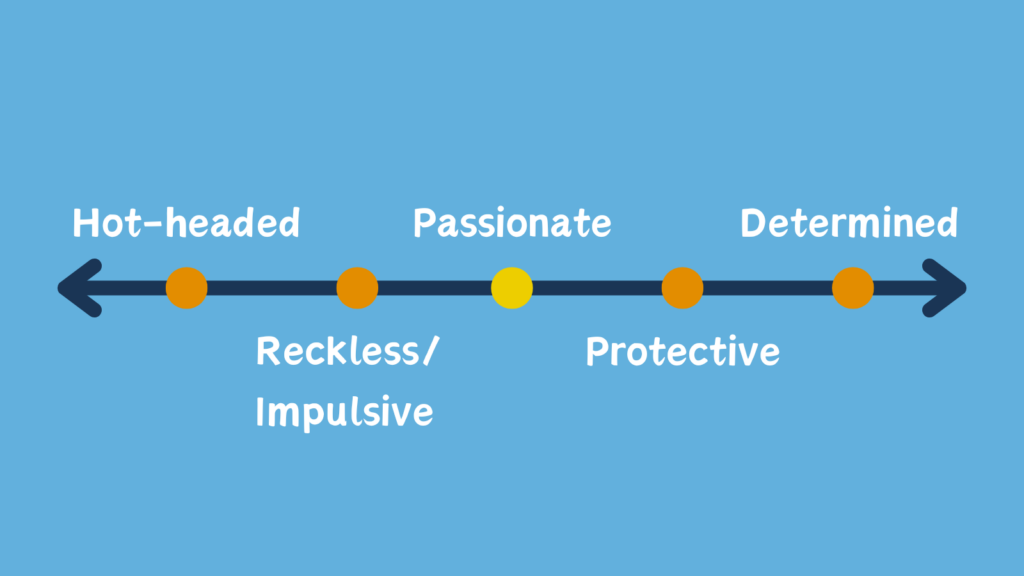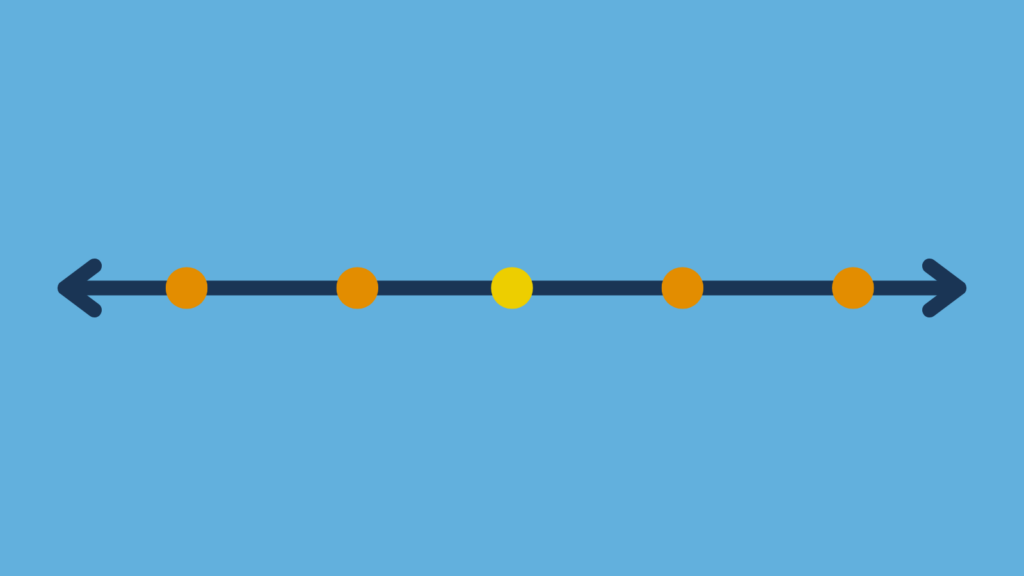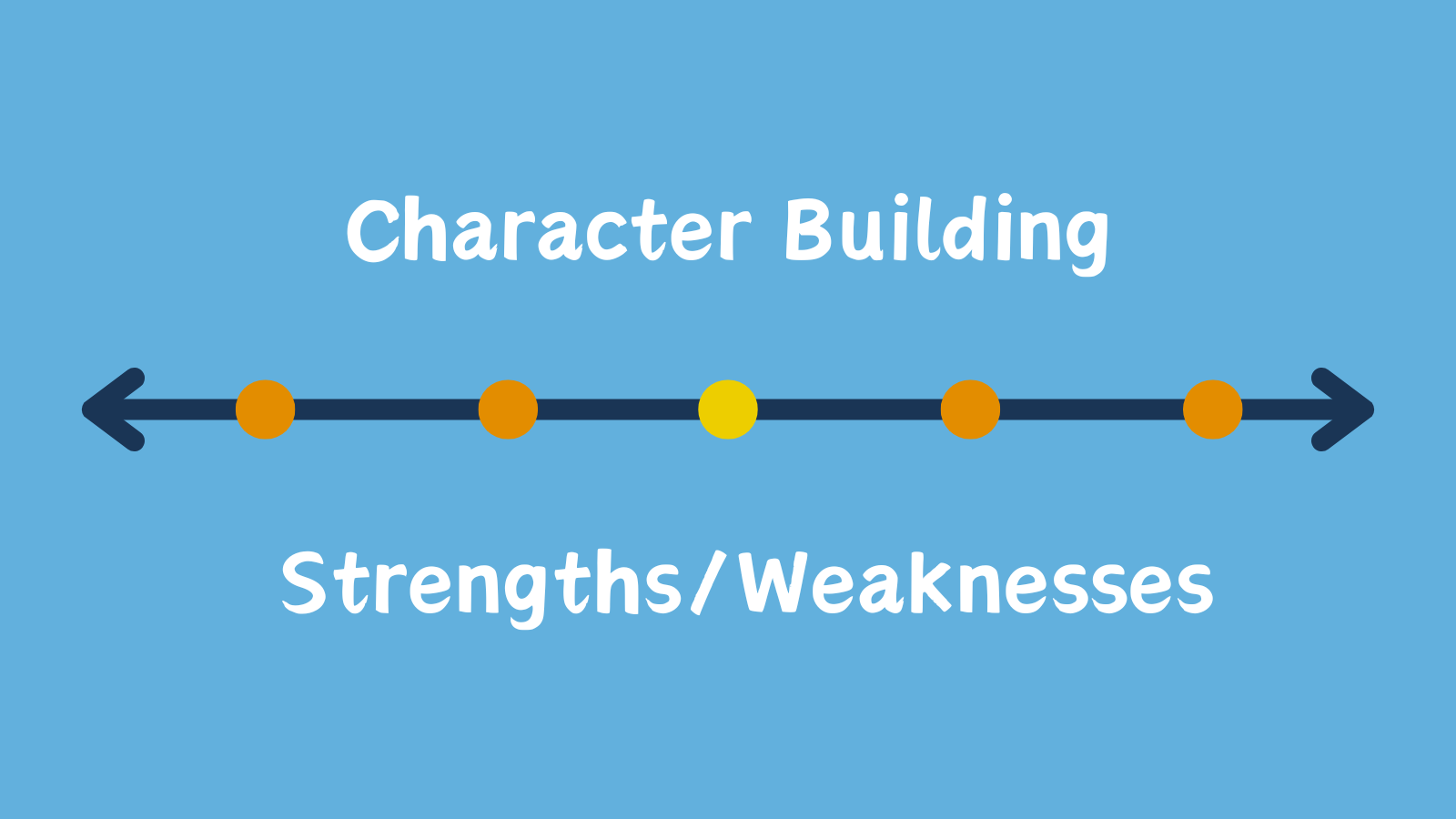Hello writers! This is going to be part one of two of my thoughts and advice on character strengths/weaknesses. In this part I’m mostly going to be talking about some of the different methods that I use to build realistic, interesting characters. Part two will talk more about how a character’s queer identity can impact that. If that’s something you’d be interested in, continue scrolling down to the beginning and/or part two!
No Strengths and Weaknesses?
Categorizing a character’s traits by “strengths” and “weaknesses” can be reductive. Yet it was one the most dominant methods I found when looking for character building advice. It filled any articles I could find on writing, was a major topic in the forums I skimmed, and almost every character building site will ask you to list your character’s strengths/weaknesses. So that’s what I did. For every major character I would sit down and brainstorm. What are my character’s strengths? What about their weaknesses? But over time I found that this mindset was actually making my characters less realistic and negatively impacting my writing.
What can be considered a strength? What traits make a character inherently weak? There is no definitive answer to either of these questions. Trying to place your characters into strict boxes only makes them robotic and limits their opportunities for growth. So what should we do instead? I’ve found after trial and error that the method that works best for me is simply giving my characters traits. Rather than labeling a trait as “good” or “bad” instead, letting how those traits are expressed change depending on the situation the character is put in.
I find that this is a more realistic and holistic approach to character strengths/weaknesses. After all, a trait that might be detrimental in one situation may actually be their saving grace in another. Taking this a step further, I like to view a character’s traits on a sliding scale. Where on one side a specific trait might manifest in more damaging, negative ways. And on the other they can be viewed more positively or helpful. Let’s look at an example of how this might look.
Example: Rin Okumura
For the purpose of explaining this thought process from a more neutral perspective, I’ll take a look at a character from a series that doesn’t belong to me. So that other fans can either agree or disagree with this assessment. I decided to analyze Rin Okumura, the main character from the anime/manga Blue Exorcist, created by Kazue Kato. This analysis might lead to some spoilers for the series so beware of that!
When I think about Rin Okumura, I’d describe him as a very passionate character. He can be extremely emotional and often relies on his heart more than his brain when it comes making decisions. But he loves just as hard and puts his all into anything he puts his mind to. This is mind, his passion can manifest in many different ways. Take a look below at the graphic below and follow along.

On the left is the trait “hot headed.” As I mentioned, Rin can be very emotional. This applies to his anger as well. It doesn’t take much to set this character off and he has a reputation for swinging first and asking questions last. This leads to him getting into physical fights which gave him a reputation in his neighborhood as a “demon child.” Hence why “hot headed” exists on the left-most side of the scale. This trait rarely leads Rin into positive situations and can be a set-back in his growth.
Meanwhile “determination,” sits on the right-most of the scale. Since Rin is so passionate, he rarely goes back on a decision he makes. Once he makes up his mind about something nothing will change his mind. Such as his declaration to defeat Satan at the beginning of the series, which acts as the catalyst for many of his other decisions. Or his determination to regain his friends’ trust and affection in the Kyoto Saga. Determination almost always helps Rin throughout the series. Often earning him the admiration of others and helping move past many obstacles in the series.
More towards the middle are the traits “reckless/impulsive” and “protective.” These traits sit closer to the center as they may hinder/help Rin respectively, but also hold potential to go the other direction. For example, Rin’s reckless/impulsive nature often gets him into sticky situations or scolded by other characters. Sometimes he leaps without looking and ends up hurting himself or others. Such as when he tries to cut off Shiemi’s legs to heal her after convincing her that her life is better spent outside her grandmother’s garden. However, when a snap decision needs to be made or when overthinking gets nothing done, this trait may actually improve a situation for Rin. The same goes for his protectiveness.
He loves his friends and brother and would lay down his life to keep them safe. He often puts himself in front of his friends to save them from danger. Such as when Rin saved Bon from the reaper by jumping into the arena, despite not taking Bon’s dare. Or by giving Izumo his shirt after being attacked by Neuhaus’ naberius. Even though doing so could have potentially exposed his secret as the son of Satan to their peers. However, this can lead to tensions in his friendships or him getting into harmful situations himself. Such as his friendship temporarily falling apart with Bon because he felt like Rin couldn’t trust/depend on them. And Rin revealing his identity as the son of Satan to rescue Shiemi.
All these traits can coexist with one another, making Rin’s character seem more realistic and fleshed out. It’s also important to recognize that these traits are all viewed through the context of the plot. While determination is often a boon for Rin, a villain’s determination to destroy the world or stick to a certain set of values may lead to their downfall.
Practice
Now, how do you put this into practice yourself? I would suggest having at least a tentative outline of where your story is going to go. What’s the starting issue/conflict that propels the story into action? And how do your character’s traits and reactions fit into that? How do you want the story to end? What kind of person is your character by the end? How do they change throughout the story? Using those sort of prompts, brainstorm what traits could apply to your character and expand on them. If your character is kind, what does kindness look like at its best? And, opposingly, how can that kindness hurt your character?
When you have one or more of these scales created, you can apply them to the plot you want to put your character in. If you want your character to experience growth and be seen in a more positive light, you need to put them in scenes that put them on the right side of the scale more often than not. Or in scenes that impact the plot more than the scenes that present them on the left side of the scale. Going back to our Rin Okumura example, the beginning of the series shows his hot-headedness right away. Showing him getting into a fight with minor villain Reiji Shiratori. However, this minor fight pales in comparison to Rin’s decisive move to survive by taking on the challenge of defeating Satan by the end of episode two.
This scale can also be used in the opposite way, helping you lead a character on a downward spiral. Perhaps you use this for a villain or nemesis and use it to visualize how they got to the point they did. How can the traits that lead them to being “evil” be seen in a positive light? And what sort of journey would they have to go through for them to sink as low as they did? Or perhaps your main character should end up even worse than how they started. Your plot actually being a carefully crafted descent into destitution or moral bankruptcy. Look at the right-most descriptions on your scale and create plot points that push them towards the left side of the scale. Put your main character in situations that actively show them in a worse light.
If you found this method to be helpful, feel free to download a copy of the blank template found below for future use!

Actual Strengths and Weaknesses
After all of this, you probably got the impression that I don’t use strengths or weaknesses at all in my writing. Which is actually false: I simply prefer to view them in a different way. I don’t like applying the term “strength” or “weakness” to character traits because it constrains my writing. Instead, I prefer to apply them to something like a character’s skill set instead. I find these to be more concrete as they rarely change in a monumental way. Rather, skills can be used to reflect a character’s personality/traits. Let’s go back to Rin Okumura.
If I had to create a list of Rin’s skills, at the top of that list would be his cooking ability. It’s presented multiple times throughout the series that Rin is an excellent cook. It’s a skill he’s learned overtime and often impresses friends and peers alike. On the other hand, Rin struggles with school work, preferring actual experience to book material. He’s shown flunking tests or goofing around rather than studying consistently throughout the series. I’d confidently call these a strength and a weakness respectively.
You may be asking yourself, why does this matter? If it doesn’t heavily affect the plot, why does it matter? Why should I be putting so much effort into all these different distinctions? And you may be right. Maybe analyzing all these different areas actually negatively impacts your writing. If that’s the case, take my words with a grain of salt, take what you need and continue on. There’s no way to write wrong and you should only do something if it helps you. Rather than doing something because it’s what “every” writer does. However, the distinction helps me because I think that strengths/weaknesses help reflect a character’s traits in the little moments. They help solidify the bigger picture of your character, showing consistency, and providing a reliable narrative for your readers to follow along with.
For example, Rin’s tremendous cooking skills help show his passion in two different ways. One, it establishes his determination. It’s explained in the series that he wasn’t always a good cook. But over time with effort and a drive to get better, he managed to become the highly skilled chef he is today. It also shows his impulsivity/recklesses in a way. Anyone who cooks can tell you, it isn’t an exact science. It’s more like an improv exercise. Once you know the recipe, you can change it as you please. Finding ways to improve it or make it more suitable for your pallet.
Perhaps the reckless and impulsive Rin Okumura thrives with a skill like cooking because it allows him to express those tendencies in a positive way. It would be less believable for him to be a skilled chemist despite the two fields having a few similarities.
This also applies to his weaknesses. Maybe Rin struggles with studying and schoolwork because of his natural inclination for recklessness. After all, being reckless and impulsive often implies some sort of action. They aren’t stationary tasks. And school work often requires being able to think and reflect for long periods of time. Something a creature of impulsivity and constant action most likely wouldn’t thrive with.
Conclusion
To me, using strengths and weaknesses in this way acts like the glue for your narrative. It helps the larger, more impactful moments seem more true to your characters. After all, how are your readers supposed to believe in your character’s grand declarations and actions if they come out of the blue? Give them the crumbs they need to follow the correct path.
As mentioned at the start, this is only part one of two. The second part will instead focus more on how the queerness of a character can impact their traits. If you liked this part I would highly encourage you to check out the second part. Either way, thank you for your time and happy writing!

Leave a Reply